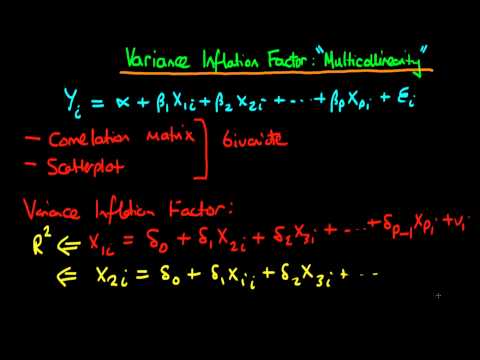Contents
Net profit and operating profit are two equally important components when evaluating a company’s profitability. Operating profit shows the profit or loss that was made in the company’s core business operations and does not include extraordinary items that do not occur in the normal course of business. Net profit, on the other hand, takes into consideration all other expenses and arrives at the company’s overall profit. Calculating the net profit is important for investors and shareholders since this is the amount that is left for distribution once all incomes and expenses have been accounted for.
The EBIDA measure removes the belief that the money paid in taxes could possibly be used to pay down debt, an assumption made in EBITDA. This debt cost assumption is made because curiosity funds are tax deductible, which, in flip, might decrease the corporate’s tax expense, giving it extra money to service its debt. Market and business factors may affect each of the three margins differently. Systematically if direct sales expenses increase across the market, then a company will have a lower gross profit margin that reflects higher costs of sales. Net profit margin is the third and final profit margin metric used in income statement analysis. It is calculated by analyzing the last section of the income statement and the net earnings of a company after accounting for all expenses.
Gross profit implies the amount left over from revenues after deducting the manufacturing cost. It is the difference between “total revenue earned” and “total cost incurred”. Investors typically want to know how much profit is being generated on a per-share basis because it shows how well a company has invested those funds that were raised from issuing stock. A higher earnings per share means a company is growing profits based on the number of stock shares that they’ve issued. EPS is helpful because it can be used to compare the profit of companies in different industries since it’s a universal metric that all publicly-traded companies use for measuring profitability. EPS also shows how well a company’s management team is at investing in the long-term financial viability of the company.
- The operating revenue is $three,000,000, which incorporates the revenue, cost of goods offered, and basic and administrative expenses.
- Net income is the result of all costs, including interest expense for outstanding debt, taxes, and any one-off items, such as the sale of an asset or division.
- However, there are a number of differences between the two terms, how they are calculated and interpreted.
- You should also know how to calculate the gross profit rate for your company.
- In order to calculate the expenses of a business, it is necessary to calculate the gross profit and operating profit first.
You also need to reduce the sales amount if customers have returned any goods. The difference between direct expenses and direct revenues is called gross profit. It is the difference bring out the difference between operating profit and net profit between total revenue earned from selling products/services and total cost of goods/services sold. An income statement is divided by direct, indirect, and interest and tax expenses.
Net income is the profit remaining after all costs incurred in the period have been subtracted from revenue generated from sales. Revenue is the total amount of income from the sale of a company’s products or services. For example, revenue for a grocery store would include the sale of everything from produce to dog food. Revenue is found at the very top of an income statement, and all profitability https://1investing.in/ calculations begin with revenue, which is why it’s often referred to as a company’s “top line” number. Your operating profit tells you the amount that your company is making from its business operations. When you are analyzing your company’s gross profit vs net profit, the critical issue that you have to remember is that gross profit takes only the cost of goods sold into account.
Company
A company’s operating profit does not, however, include extraordinary expenses or income that occurs outside the normal course of business. This may be items such as the cost incurred to build a new showroom, or the income that may have been received by selling off a large building. The reason why such items are not included is that they do not occur frequently and may mislead the management, investors and shareholders with regard to the company’s future earnings prospects. Operating profit–also called operating income–is the result of subtracting a company’s operating expenses from gross profit. Gross profit is revenue minus a company’s COGS, which provides the profit from production or core operations. For example, a car manufacturer would show gross profit in the upper portion of its income statement, which represents the revenue from car sales minus COGS and any production costs directly tied to making cars.
Depreciation Of The AssetDepreciation is a systematic allocation method used to account for the costs of any physical or tangible asset throughout its useful life. Depreciation enables companies to generate revenue from their assets while only charging a fraction of the cost of the asset in use each year. Operating profit is often used by managers to identify areas for improvement in a company’s operations. Now, to deduce the differences between the two metrics, the following is a debate of gross profit vs net profit pertaining to financial treatment.

Also, nonrecurring objects corresponding to cash paid for a lawsuit settlement usually are not included. Operating profit is the amount of revenue that remains after subtracting a company’s variable and fixed operating expenses. In other words, operating profit is the profit a company earns from its business. The metric includes expenses for the raw materials used in production to create products for sale, called cost of goods sold or COGS. Operating profit also includes all of the day-to-day costs of running a business, such as rent, utilities, payroll, and depreciation. Depreciation is the accounting process that spreads out the cost of an asset, such as equipment, over the useful life of the asset.
How to Collect Money from Clients
The article that follows offers a clear explanation of each term and shows how net profit and operating profit and similar and different to each other. Operating efficiency forms the second section of a company’s income statement and focuses on indirect costs. Companies have a wide range of indirect costs which also influence the bottom line. Some commonly reported indirect costs includes research and development, marketing campaign expenses, general and administrative expenses, and depreciation and amortization. Operating profit and net profit are part of the income statement of a company.
Also, a firm with a substantial gross profit may still incur a net loss as it entirely depends on the firm’s accumulated expenses. Operating profit is a company’s profit after all expenses are taken out except for the cost of debt, taxes, and certain one-off items. Running out of cash in your business is like getting smacked in the face with an airbag.
Still, on the other side, the Net Profit figure will reveal the actual profit, which is made during the financial year. Both are calculated after the deduction of various expenses of the company. Both show the profitability of the company and provide profit generated by the company.

In contrast, Net profit helps to know the actual profit made by the company in an accounting period. Net Profit is the surplus remained with the company after deducting all expenses, interest, and taxes. After we arrive at the Operating Profit, then the interest on long-term debt and taxes are deducted from it, which results in Net Profit. The term “profit” is divided into different types according to the source of benefit and the stage at which it is calculated during the life cycle of a business.
Operating Profit vs Net Profit Differences
The net profit, on the other hand, is the profit after all expenses have been considered. As a business owner, familiarizing yourself with some accounting rules and concepts can be vital for the wellbeing of your business. One of these concepts is the question about gross profit vs net profit vs operating profit. The picture becomes even hazier when you consider that your financial statements provide you with three different profit figures – gross profit, operating profit, and net profit.
Derived from gross revenue, working revenue reflects the residual income that continues to be after accounting for all the costs of doing business. Operating revenue is an accounting determine that measures the amount of profit realized from a enterprise’s operations, after deductingoperating expensessuch as wages, depreciation, andcost of goods offered. Also exclude main tools purchases, corresponding to computer systems and automobiles, as a result of these outlays aren’t typical business bills, however are lengthy-time period investments, instead.

In YEAR 1, the revenue of Diego’s company would increase by $1,500, but there would be no effect on the cash balance. In other words, in YEAR 1, the net profit would be higher without a corresponding increase in the cash balance. While gross profit is an essential measure of profitability, there are other profitability measures that you must also consider. However, after deducting all the costs that it has incurred, this falls to a net profit of $11,000. Bear in mind that the amount alone won’t help you to differentiate between gross profit vs net profit. Following the 2017 Tax Cuts and Jobs Act, the corporate tax rate was reduced from 35% to 21%.
Poland Business Immigration
Operating Profit helps in the elimination of unnecessary expenses while Net Profit provides the overview of the current position of the entity. Gross Profit is the temporary estimate of company’s earnings, Operating Expenses shows the operating effectiveness of the entity, but Net Profit reveals the actual profit made during the year. Net profit is affected by a company’s financial decisions, such as borrowing money or paying dividends. As well, EBIDA may be deceptive because it’ll nonetheless always be larger than net income, and in most cases, larger than EBIT as nicely. And like different popular metrics , EBIDA isn’t regulated by Generally Accepted Accounting Principles , thus, what’s included is on the company’s discretion. The following table highlights the points of differences between gross profit and net profit.
Key Differences Between Operating Profit vs Net Profit
(Remember, earnings is just one other title for revenue.) What has not yet been subtracted from revenue is interest and taxes. Because working profit is the revenue a enterprise earns from the business it is in – from operations. Taxes don’t actually have something to do with how nicely you’re operating your company. And curiosity bills depend upon whether the corporate is financed with debt or equity.
Financial StatementsFinancial statements are written reports prepared by a company’s management to present the company’s financial affairs over a given period . Accounting Period refers to the period in which all financial transactions are recorded and financial statements are prepared. Operating profit is about the profitability of a company’s operations, whereas net profit is the company’s abilities to generate for owners, stake owners, and shareholders.
